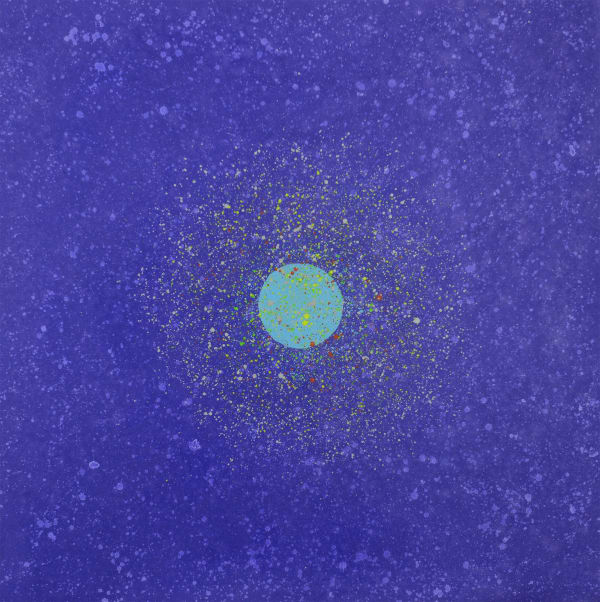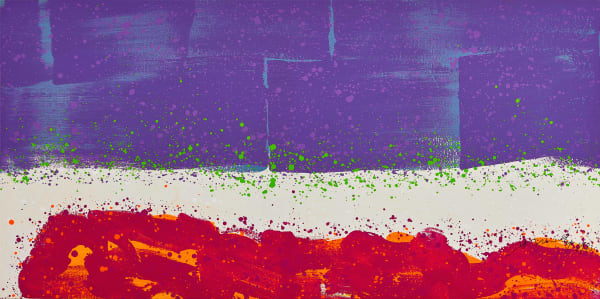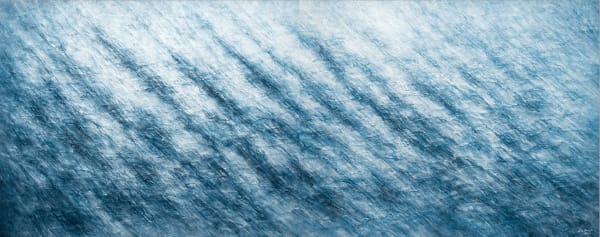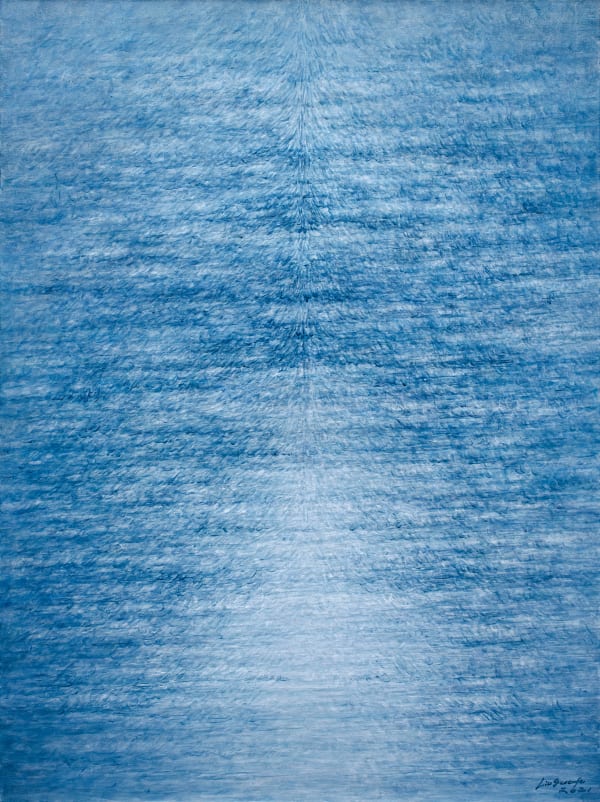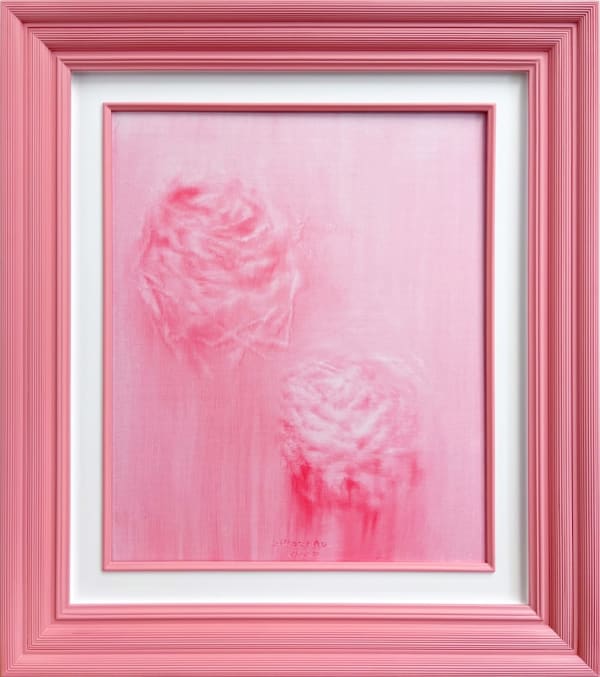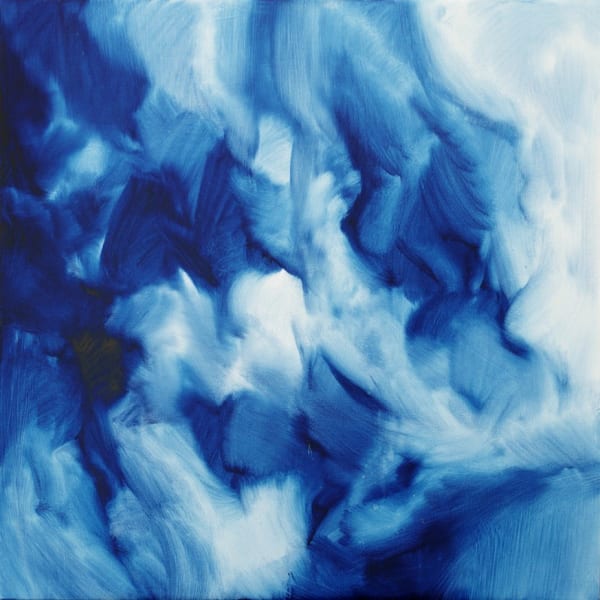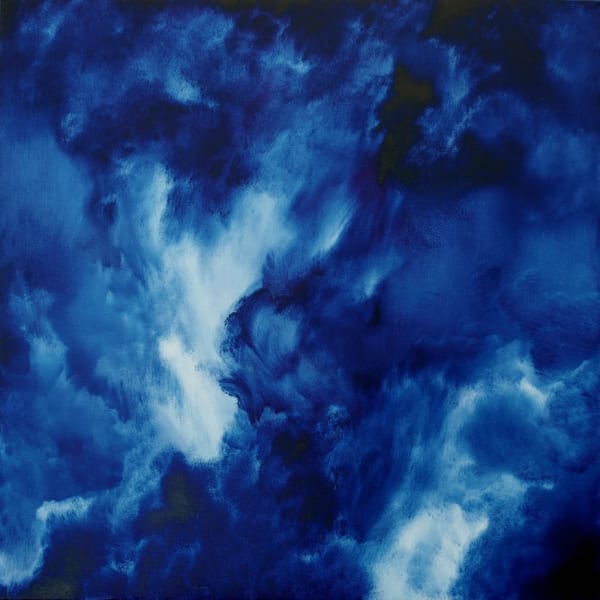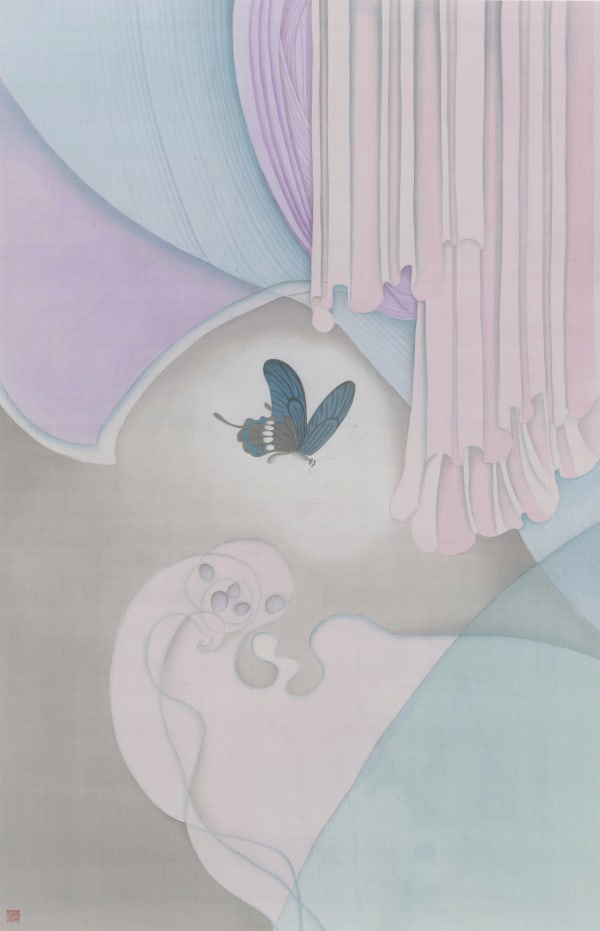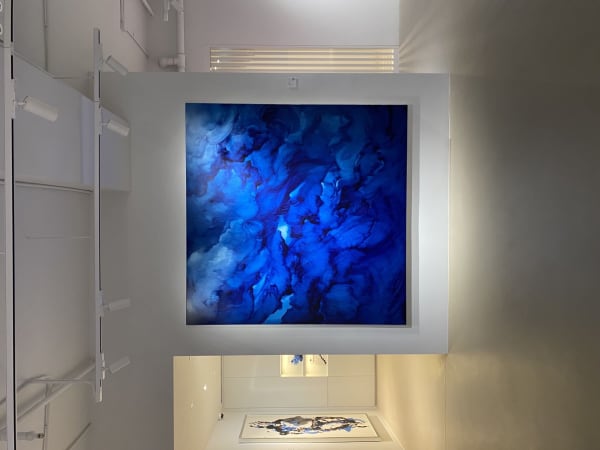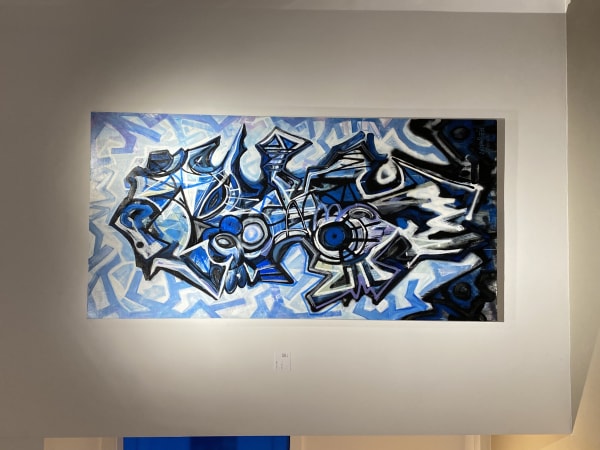As Water
Preface by Dr. Malcolm McNeill
2023 is a water year in the cycle of the five phases. Curator Calvin Hui has taken this to heart in this exhibition, bringing together an engaging series of artists to celebrate growth, life, and nourishment. As Water is suffused with the various attributes of this element: encompassing reflective equanimity, a dynamic, generative spirit, and offering a promise of prosperity.
Water is integral to Chinese art and aesthetics. Water manifests myriad metaphors in the complex currents of China’s cultural heritage. Water is an essential ingredient that ink artists must master in their technical training. Water is also an ever-renewing catalyst for conceptual invention. It is found across history, from the classical cannon to the works of contemporary artists in this exhibition at 3812 Gallery today.
When I was invited to provide an introduction for As Water by curator Calvin Hui, there were many ways I could have responded to his brief. My introduction looks at Calvin’s theme in three ways: water as heritage, water as material, and water as concept. In turn, this essay is an invitation to you. I invite you to allow yourself to take on some of the properties of water as you experience the exhibition, to seek out more fluid ways of thinking, of looking and of reflecting on these artworks, and to immerse yourself in the complex heritage, rich materiality, and conceptual dynamism of these artists and their work.
Water as heritage
When looking for a classical reference point for this exhibition’s theme, I first turned to the famous eighth passage of the Dao De Jing:
The greatest excellence is like water. Water’s excellence benefits all things, yet does not push back when occupying the lowest of places. Therefore, water is close to the Dao.
上善若水。水善利萬物而不爭,處衆人之所惡,故幾於道。
This passage is so much more than an injunction to simply go with the flow. The Dao De Jing was written in the philosophical fluoresce of the Warring States period (476-221 BCE). It tells us that if we aspire to greatness we must reflect patterns of the natural world in our own lives. We must understand nature’s principles not as something outside of ourselves, but as a something intrinsic to our own being. A few centuries later, Han dynasty (202 BCE-220 CE) scholars developed this concept into a belief that humanity and nature were inextricably intertwined. They called this a ‘sympathetic resonance between humanity and heaven’ 天人感應.
Later generations of artists and art theorists incorporated these ideas into their practice. These range from celebrations of spontaneity and naturalness in Tang dynasty (618-907 CE) texts, to dynamic studies of water in Southern Song (1127-1279) court art, to paramount position of landscape – literally paintings of mountains of water – in the minds of the Ming literati (1368-1644).
Hsiao Chin (b. 1935), one of the senior artists in this exhibition, incorporates similar concepts in his own transnational modern abstractions. Hsiao describes the maturation of his own artistic processes through Zen metaphors, a form of Buddhism that shares a great deal in common with the ideas in the Dao De Jing. He writes:
Thus, I looked at the mountains and saw mountains again, and looked at the water and saw water again. I attempted to join with the universe through a mindset of “absence of self” to experience the inspiration of the universe giving me energy, and to use my painting to convey this great, infinite wellspring.
[Ref: Zen Art, pp.13-14]
Water as material
While water can be a metaphor for human creativity, on a more literal level it has always been a key constituent in ink painting and calligraphy. Modern and contemporary artists continued to experiment with water’s material properties throughout the 20th and 21st centuries. The artists in this exhibition show us how water is mastered and manipulated in new and exciting ways today.
3812 Gallery has a long-standing commitment to ink art. Many of the artists in this exhibition work primarily if not exclusively in ink. The crisp meticulous brush techniques of Yan Yanling’s (b. 1974) flower and insect painting embody the precision that can be achieved with the careful of control of this malleable media. The diverse materials of Chloe Ho’s (b.1987) oeuvre experiment with combinations of ink, colour pigments, as well as unexpected ingredients like coffee, infusing her evocative figural and floral forms with an intriguing ambiguity.
Even though their chosen media is immiscible with water, the artists in As Water working in oil retain a sensitivity to liquid. Liu Yangwen’s (b. 1995) angular abstraction 9-1-22,evokes a rock from lake Tai. These rocks’ porous surfaces are eroded over long periods of partial or total immersion. In 9-1-22 the rock has been transmuted once more, reshaped into angular outlines and chromatic blocks in Liu’s cool-blue colour palette. Shang Chengxiang’s oils Entity and Sunshine of Another Afternoon explicitly engage with water as a surrealist subject (the oil version of Sunshine of Another Afternoon was replaced in this exhibition with a colour pencil version including a female figure after the time of writing). In Entity a realist waterfall cascades across the canvas in a monumental arc while a vast glitter ball hangs partly obscured in the sky above. The two motifs interact as lilac and purplish tones refracted in the vapour rising from the cascade bounce off the synthetic surfaces of the glitterball’s mirrors. Sunshine of Another Afternoon renders an empty swimming pool in soothingly cool turquoise tones that imply the absent water. Yet above the empty pool the wall and step ladder are recursively repeated in interlocking layers – enticing us to enter, or perhaps to escape. Zhao Zhao’s (b. 1982) oils evoke a humid space laden with water. In Flowers 2022-03, colour seems to condense upon the canvas from within, dripping down in globular streaks to reveal blurred bouquets. In Sky 2019-03, cloud-like abstractions billow across the surface of the painting, appearing like raw qi – the vestigial traces of Zhao Zhao’s creative energy.
Water as concept
For many of the artists in As Water, water is more than a substrate to manipulate. It is an active catalyst for creativity. The amorphous organic surfaces of Raymond Fung’s (b. 1952) Breathing series rely on diffusion, exploring environmental concerns through an innovative use of evaporation. Where traditional ink painting emphasises gestural brush work Breathing is created through tactile manipulation of ink and colour pigments beneath a semi-permeable film. The liquid then partially evaporates leaving a semi-abstract landscape behind. This series combines Fung’s artistic career with environmental concerns central to his architectural practice. Breathing uses the water in ink to engage our shared experience of the Anthropocene.
Liu Guofu (b. 1964) has developed an almost alchemical use of water – creating an emulsifier that allows him to mix it with oil. This enables Liu to produce inimitably ethereal paintings. Particularly in his Pervasion, Flower and Empty Cold series. In works such as Pervasion No. 38 and Empty Cold 2022-1, Liu painstakingly applies layer upon layer of pigments to his canvas achieving an almost translucent effect. Executed in predominantly cool blue and white tones Liu’s paintings seem to emit light rather than absorb it. Liu describes his work as being “In Praise of Blandness” in English, but his Chinese term – songdan 頌淡- could equally be translated as “an homage to dilution”.
Whether directly or indirectly the theme of water runs through and around all these artists. I hope that the time we spend with this exhibition allows us to be more fluid in our ways of thinking, in our ways of looking, and in our ways of feeling, responding to the diverse creative expressions these artworks contain.
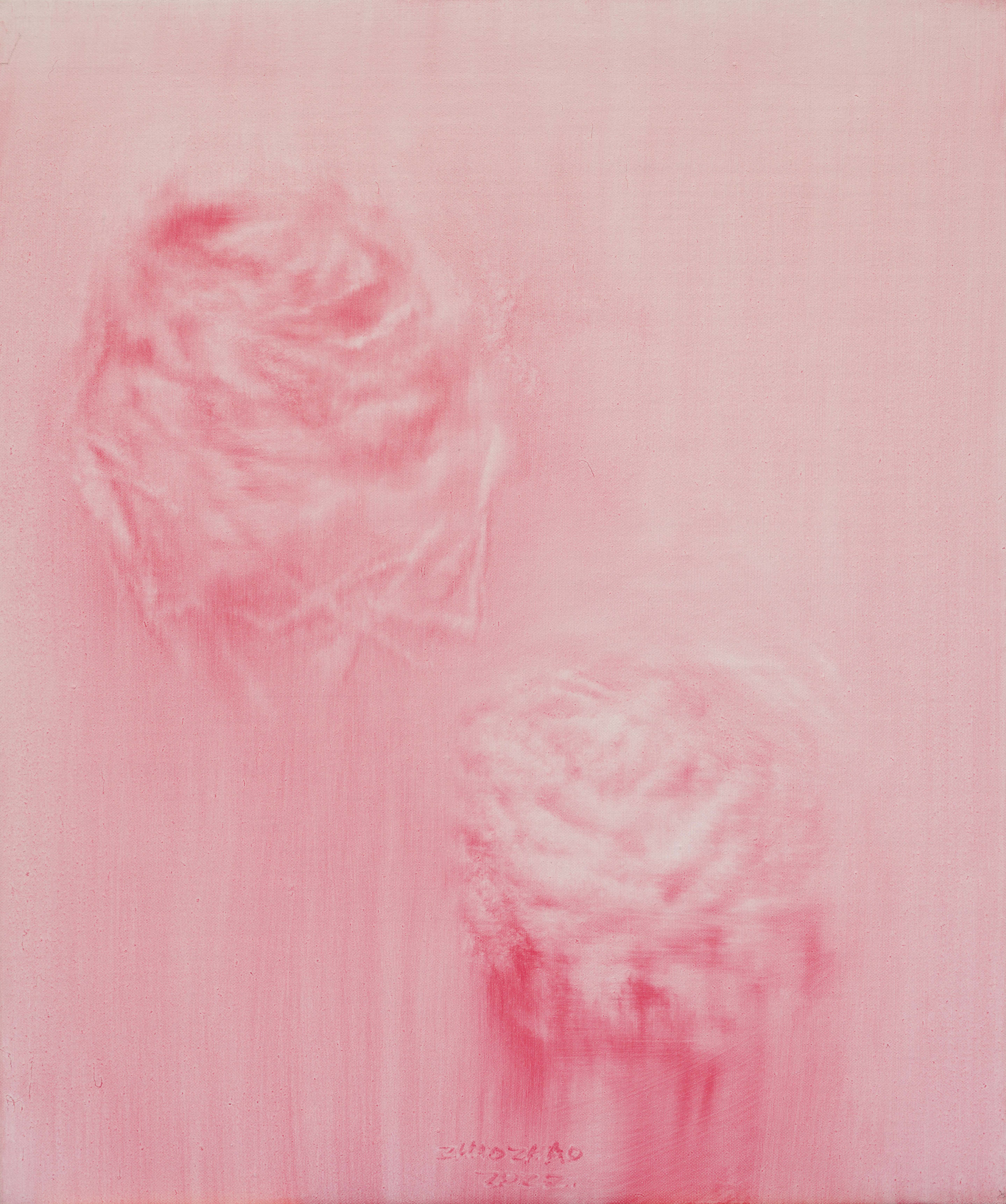
-
 Raymond Fung 馮永基, Breathing (24)(25)(26)《呼吸(二十四)(二十五)(二十六)》, 2021
Raymond Fung 馮永基, Breathing (24)(25)(26)《呼吸(二十四)(二十五)(二十六)》, 2021 -
 Raymond Fung 馮永基, Breathing (27)《呼吸 (二十七)》, 2022
Raymond Fung 馮永基, Breathing (27)《呼吸 (二十七)》, 2022 -
 Chloe Ho 何鳳蓮, Man and Universe《人和宇宙》, 2019
Chloe Ho 何鳳蓮, Man and Universe《人和宇宙》, 2019 -
 Chloe Ho 何鳳蓮, Ink Eruption《墨水噴發》, 2017
Chloe Ho 何鳳蓮, Ink Eruption《墨水噴發》, 2017 -
 Hsiao Chin 蕭勤, To the Eternal Garden-1《往永久的花園-1》, 1992-2015
Hsiao Chin 蕭勤, To the Eternal Garden-1《往永久的花園-1》, 1992-2015 -
 Hsiao Chin 蕭勤, Chi-5《炁-5》, 2011
Hsiao Chin 蕭勤, Chi-5《炁-5》, 2011 -
 Hsiao Chin 蕭勤, Beginning of Chi-2《炁之始-2》, 1983
Hsiao Chin 蕭勤, Beginning of Chi-2《炁之始-2》, 1983 -
 Hsiao Chin 蕭勤, Flying Over the Eternal Garden-7《飛越永久的花園-7》, 1996
Hsiao Chin 蕭勤, Flying Over the Eternal Garden-7《飛越永久的花園-7》, 1996 -
 Liu Guofu 劉國夫, Pervasion No. 31《彌漫 - 31》, 2018
Liu Guofu 劉國夫, Pervasion No. 31《彌漫 - 31》, 2018 -
 Liu Guofu 劉國夫, Pervasion No. 35《彌漫 - 35》, 2018
Liu Guofu 劉國夫, Pervasion No. 35《彌漫 - 35》, 2018 -
 Liu Guofu 劉國夫, Pervasion No. 38《彌漫 - 38》, 2021
Liu Guofu 劉國夫, Pervasion No. 38《彌漫 - 38》, 2021 -
 Liu Guofu 劉國夫, Cold Mountain No. 10《冷山 - 10》, 2021
Liu Guofu 劉國夫, Cold Mountain No. 10《冷山 - 10》, 2021 -
 Liu Guofu 劉國夫, Open Space No. 68《敞 - 68》, 2021
Liu Guofu 劉國夫, Open Space No. 68《敞 - 68》, 2021 -
 Liu Yangwen 劉養聞, 9-1-22, 2022
Liu Yangwen 劉養聞, 9-1-22, 2022 -
 Liu Yangwen 劉養聞, Silver Flower, Blazing Tree《銀花火樹》, 2022
Liu Yangwen 劉養聞, Silver Flower, Blazing Tree《銀花火樹》, 2022 -
 Zhao Zhao 趙趙, Flowers 2021-01《花 2021-01》, 2021
Zhao Zhao 趙趙, Flowers 2021-01《花 2021-01》, 2021 -
 Zhao Zhao 趙趙, Flowers 2022-03《花 2022-03》, 2022
Zhao Zhao 趙趙, Flowers 2022-03《花 2022-03》, 2022 -
 Zhao Zhao 趙趙, Sky 2019-03《天空 2019-03》, 2019
Zhao Zhao 趙趙, Sky 2019-03《天空 2019-03》, 2019 -
 Zhao Zhao 趙趙, Sky 2021-05《天空 2021-05》, 2021
Zhao Zhao 趙趙, Sky 2021-05《天空 2021-05》, 2021 -
 Zhao Zhao 趙趙, Sky 2021-07《天空 2021-07》, 2021
Zhao Zhao 趙趙, Sky 2021-07《天空 2021-07》, 2021 -
 Shang Chengxiang 商成祥, Sunshine on Another Afternoon《另一個下午的陽光》, 2021
Shang Chengxiang 商成祥, Sunshine on Another Afternoon《另一個下午的陽光》, 2021 -
 Shang Chengxiang 商成祥, Entity No.4《存在體 No.4》, 2019
Shang Chengxiang 商成祥, Entity No.4《存在體 No.4》, 2019 -
 Yang Yanling 楊雁翎, Jia《嘉》, 2021
Yang Yanling 楊雁翎, Jia《嘉》, 2021 -
 Yang Yanling 楊雁翎, Xiao《筱》, 2022
Yang Yanling 楊雁翎, Xiao《筱》, 2022 -
 Yang Yanling 楊雁翎, Ran《苒》, 2022
Yang Yanling 楊雁翎, Ran《苒》, 2022






